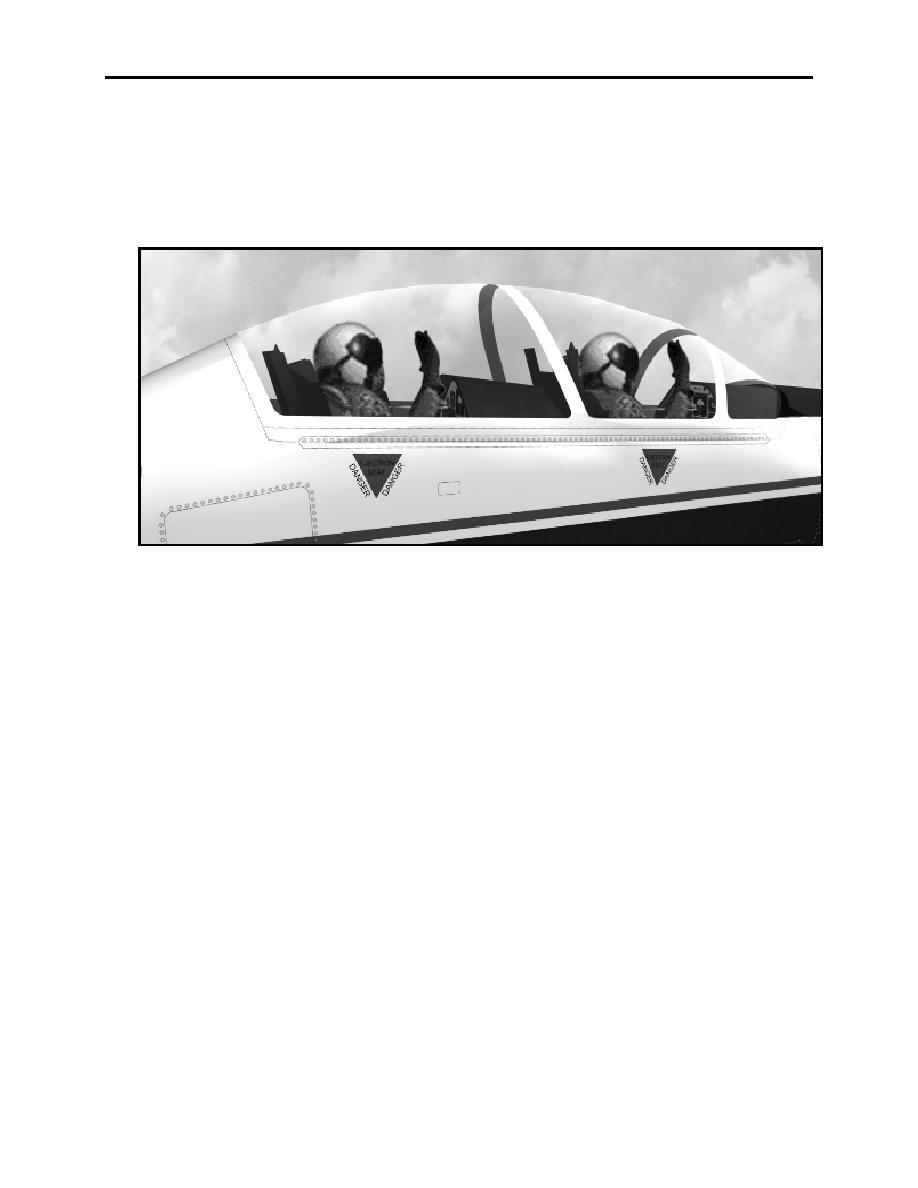 |
|||
|
|
|||
|
|
|||
| ||||||||||
|
|  T-6A FORMATION
CHAPTER FOUR
"(Tactical Call sign), you have the lead on the left/right." (old Lead)
"Roger, (Tactical Call sign) has the lead on the left/right." (new Lead)
"2" (old Lead)
Figure 4-20 Lead Change Signal
2. The Wingman. Upon receiving the visual lead change signal, the Wing (new Lead) will pat
his helmet three (3) times, then point and look forward. If receiving a radio lead change,
Wingman simply states, "(Tactical Call sign), has the lead on the left/right." Once the new Lead
(old Wingman) accepts the lead, he will squawk, "ALT, NACWS-ON" while the new Wingman
(old Lead) squawks, "STBY, NACWS-OFF" (as a technique, wait to hear a NACWS hit prior to
squawking STBY and placing NACWS-OFF). The Lead should begin a good VFR scan pattern,
set 200 KIAS, maintain a solid platform, and orient themselves in the area. Do not attempt to
make any corrections for altitude or heading until the new Wingman has arrived in the parade
position.
NOTE
For obvious safety reasons, there can be no confusion of who is the
new Lead and when, exactly, they assume the lead. With this in
mind, visual lead changes occur exactly when the new Lead pilot
points forward. Radio lead changes happen exactly when the new
Lead finishes stating, "(Tactical Call sign), has the lead on the
left/right". If in doubt about who has the lead, quickly and
accurately use the radio!
SECTION PARADE 4-23
|
|
Privacy Statement - Press Release - Copyright Information. - Contact Us |